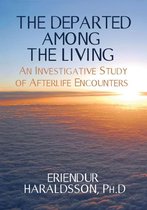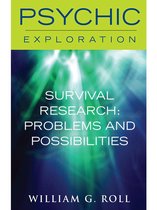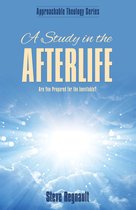Afterlife Explorers Vol 1: The Pioneers of Psychical Research Ebook Tooltip Ebooks kunnen worden gelezen op uw computer en op daarvoor geschikte e-readers.
Afbeeldingen
Sla de afbeeldingen overArtikel vergelijken
- Engels
- E-book
- 9781908733016
- 25 januari 2012
- Adobe ePub
Samenvatting
I have been asked more than a few times why so much of what I write about life after death, psychical research, and related paranorml subjects has to do with stories from a hundred and more years ago more specifically, with the research that took place between 1850 and 1930 and not more with modern mediums, researchers, and phenomena. Part of the reason, I explain, is that there has been relatively very little research aimed at developing evidence of mans survival after death going on since 1930. Moreover, what research has taken place in recent decades has, for the most part, been adequately explained by the researchers in their own books or reports. But that is a secondary reason only. The primary reason is that I am convinced that the phenomena observed by the pioneers of psychical research, especially in the area of mediumship and, concomitantly, in the area of spirit communication and life after death, were much more dynamic and evidential than those of today. Sometime around 1920, which perhaps not coincidental is when Professor James Hyslop, one of the key pioneers, died, the research reached a point of diminishing returns. The scientists and scholars engaged in the research began to realize that they were continually reinventing the wheel and would never succeed in producing evidence to satisfy either the scientific fundamentalists or the religious fundamentalists. As strong as the evidence was, it did not offer the absolute proof the skeptics demanded.On the other hand, it may have been that the advanced spirits either gave up in frustration or concluded that they had given us all they could in the way of evidence. A number of early spirit messages indicated that a delegation of advanced spirits had been appointed to give man a better idea of his destiny after death and thereby renew his spiritual outlook in this life. Whatever the cause, during the 1930s, psychical research changed its focus from finding evidence for the survival of consciousness to research in extra-sensory perception (ESP) and related psychic phenomena. What was previously called psychical research came to be called parapsychology. As the pioneers passed on, they were replaced by researchers, who, having witnessed the derision heaped on the pioneers by materialistic know-nothings, were concerned with their reputations in academic circles. Since spirits and life after death had come to be taboo subjects in academia, the new breed of researcher focused on ESP and seemingly went out of their way to avoid linking their interest with the survival of consciousness issue. In fact, a fair percentage of parapsychologists, while accepting the reality of ESP, rejected the spirit or survival hypothesis, concluding that all such phenomena were somehow produced by the subconscious of the individuals involved in their experiments. Such a conclusion was much more academically and scientifically acceptable and made sure funds for further research were available. To even hint at the spirit hypothesis was to invite disdain and even dismissal. I fear the idea of spirit is too repulsive to the majority of savants to be tolerated, Titus Bull, M.D., a prominent researcher, offered in the August 1926 issue of The Journal of the American Society for Psychical Research, adding that researchers were purposefully confusing the issue by pandering to professional prejudice in referring to spirits by other names and otherwise dodging the whole issue of survival and spirits. While a few later researchers delved into the area of past-life studies, their work received little attention from mainstream science and was ignored or resisted by orthodox religions. When, during the 1970s, research began in the field of near-death experiences, the researchers, wanting to be scientifically proper, focused more on the positive effects of the NDE than on the survival implications. It was not until late in the 1990s, when Dr. Gary Schwartz of the University of Arizona, began investigating the clairvoyant type of mediumship that survival research again resurfaced. But Schwartz came under attack by many scientific fundamentalists and research in this area was further discouraged. What little survival research there is today seems to be solely with the clairvoyants, whereas the research that took place between 1850 and 1930 was carried out with trance mediums, like Leonora Piper and Gladys Osborne Leonard, and direct-voice mediums, such as Etta Wriedt and John Sloane. The clairvoyant type of mediumship offers opportunities for more statistical analysis than the earlier forms of research, but to the person who has really digested the old research the current research is not nearly as convincing or as interesting as the old. Unfortunately, the work of the pioneers has been filed away in dust-covered cabinets and all but forgotten. It has been my observation that those who know about it, including modern parapsychologists, dont have a good grasp of it, and many of them have dismissed it as outdated science. They assume that because it is not better known today that there must not have been much to it, or they believe the pseudoskeptics, who claim that the pioneers were all victims of charlatans. This volume, intended as the first of four volumes, covers the period before 1882, the year the Society for Psychical Research (SPR) was organized and more formal scientific methods were employed. The pre-1882 researchers were by no means ignorant of the scientific methods necessary to validate mediums, and it becomes clear to the discerning reader that the earliest pioneers were very much on guard against deception and mindful of explanations other than spirits, including the subconscious theories. It also becomes apparent to the serious student of this subject that the earliest researchers went beyond the evidential aspects of mediumship and recorded many messages concerning the afterlife environment and the meaning of this life. While these messages were not evidential, except in their consistency, they served as the foundation of a whole new philosophy, one that made some sense of the afterlife and gave meaning to this life. The reader might very well begin with the appendices of this book to get a feel for what popular author Sir Arthur Conan Doyle called the new revelation. After the formation of the SPR in 1882, this new revelation pretty much came to a halt. The focus was clearly on trivial messages those offering evidence of spirit life rather than on higher truths and enlightenment. The know-nothings or Philistines aware of the trivial messages and either ignorant of the profound messages or indifferent to them called it twaddle and laughed it all off. As scientific and technical advances brought about an increasingly materialistic way of life, the new revelation was further ignored and forgotten. However, the pioneers definitely planted some seeds and enough of them sprouted to provide nourishment for future generations. And there it sits, waiting to be rediscovered, if only enough people will really take the time to look for it and thoroughly examine it.
Productspecificaties
Inhoud
- Taal
- en
- Bindwijze
- E-book
- Oorspronkelijke releasedatum
- 25 januari 2012
- Ebook Formaat
- Adobe ePub
Betrokkenen
- Hoofdauteur
- Michael Tymn
- Hoofduitgeverij
- White Crow Books
Lees mogelijkheden
- Lees dit ebook op
- Android (smartphone en tablet) | Kobo e-reader | Desktop (Mac en Windows) | iOS (smartphone en tablet) | Windows (smartphone en tablet)
Overige kenmerken
- Studieboek
- Nee
EAN
- EAN
- 9781908733016
Kies gewenste uitvoering
Prijsinformatie en bestellen
De prijs van dit product is 8 euro en 99 cent.- E-book is direct beschikbaar na aankoop
- E-books lezen is voordelig
- Dag en nacht klantenservice
- Veilig betalen
Rapporteer dit artikel
Je wilt melding doen van illegale inhoud over dit artikel:
- Ik wil melding doen als klant
- Ik wil melding doen als autoriteit of trusted flagger
- Ik wil melding doen als partner
- Ik wil melding doen als merkhouder
Geen klant, autoriteit, trusted flagger, merkhouder of partner? Gebruik dan onderstaande link om melding te doen.








